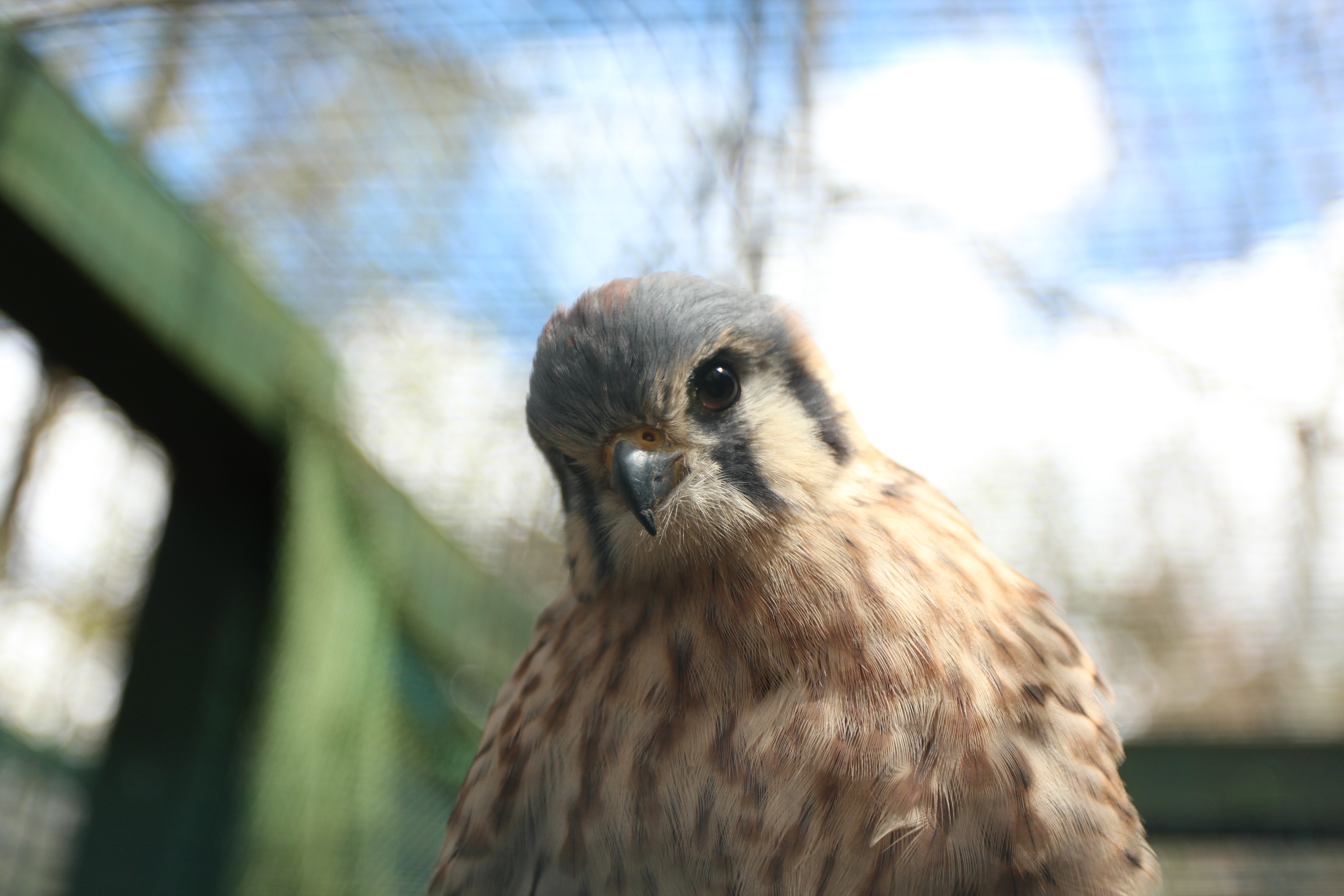
Lost in thought in an expanse of pine trees in Wilmington, in the shadow of Whiteface Mountain, I become aware that something lightly colored is moving quickly through the undergrowth. Shifting from side to side, peering through the thin spaces between the trees, I realize that what I am seeing is a wolf.
It shouldn’t be surprising; after all, on a nearby tree hangs a bright yellow sign reading, “wolf crossing” and I am here, in this spot, to view wildlife. Nevertheless, the realization that I’m seeing a wolf, trotting with purpose along a fenceline, feels unexpected. My smile is enormous, my heart in my throat. The wolf, it turns out, is named Kiska. She is a gorgeous, golden-colored gray wolf, one of three residing at the Adirondack Wildlife Refuge and Rehabilitation Center in Wilmington.
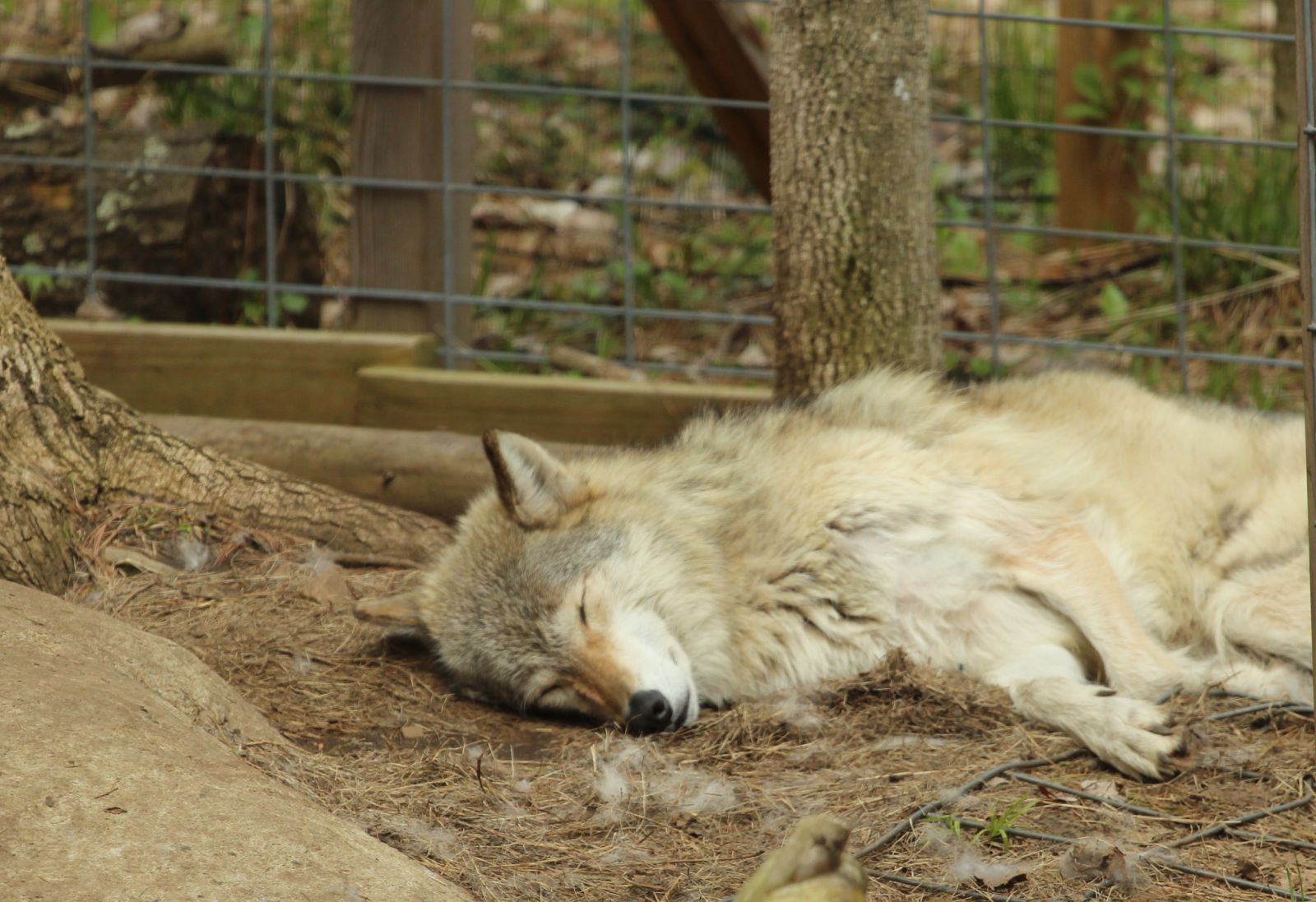
The Adirondack Wildlife Refuge is a non-profit located amid tall pines on the east bank of the East Branch of the Ausable River and is the creation of Steve and Wendy Hall, who have been rehabilitating wildlife for decades. It is home to an array of animals that most humans will rarely get to see so closely. In the case of the bears, most won’t want to. Among the animals residing in this corner of the Whiteface region are two black bears, three wolves, a bobcat, and a myriad of birds, all of which may be viewed at close range.
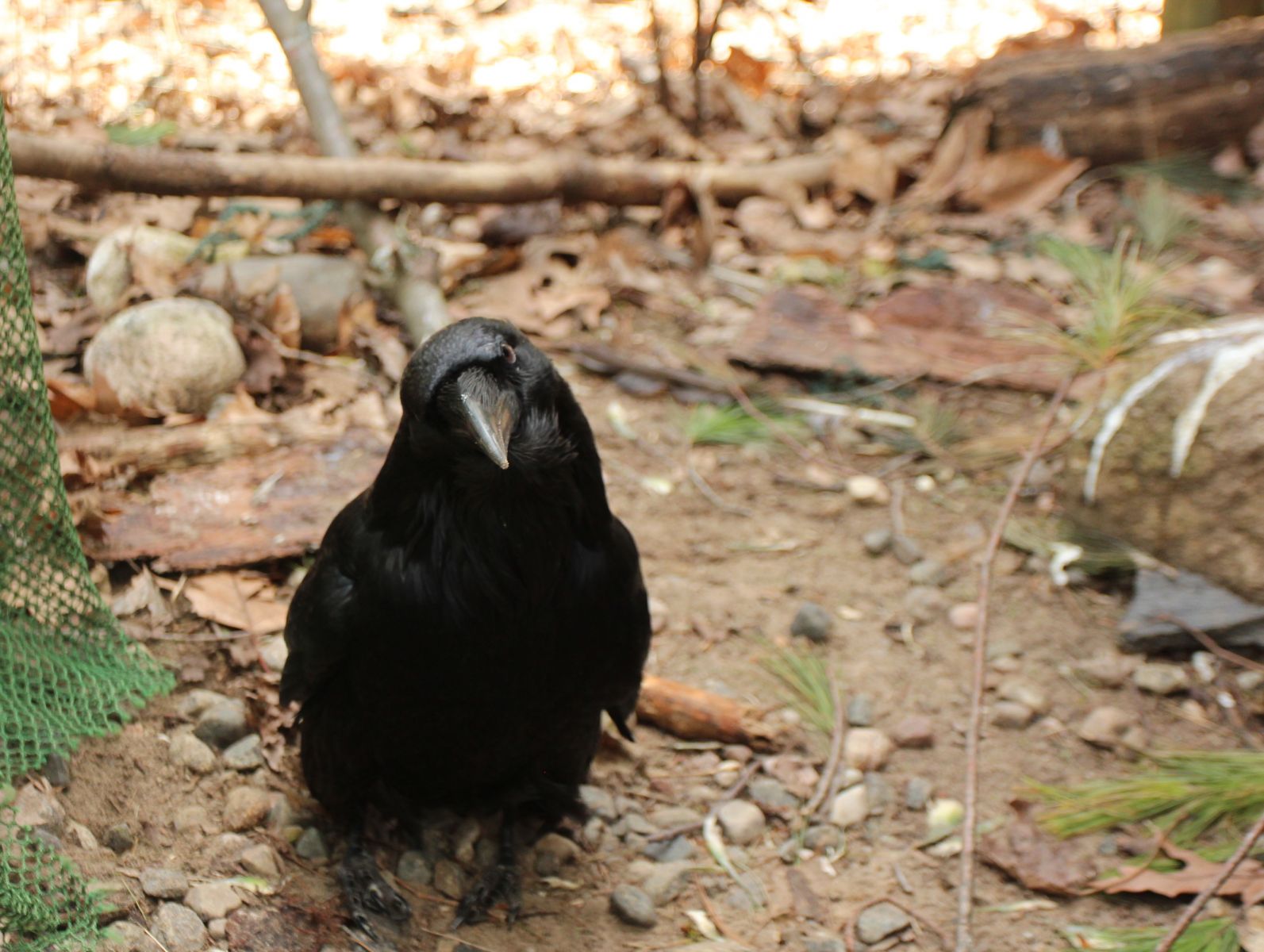
A visit to the refuge begins in the education center, a bright space filled with photographs and paintings depicting the wildlife living at the refuge. Flat-screen televisions share photos of the animals, as well as educational information about Adirondack wildlife, their habitats, and more. Large, wide windows offer a view into “Wolf Wood,” the enclosure housing gray wolves, and the first stop for visitors.
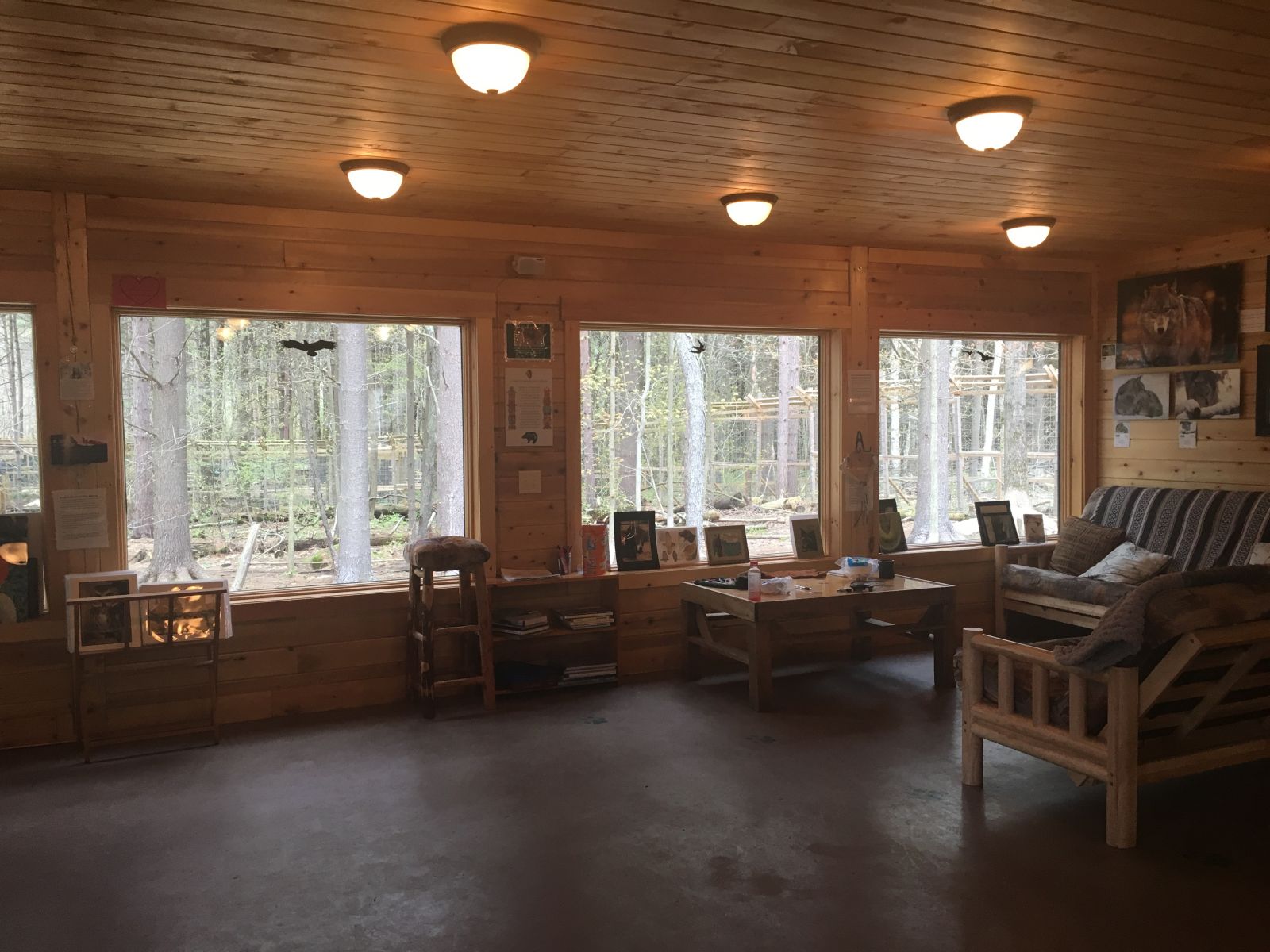
"We are the ecosystem."
Even though I am an animal lover, because I had never seen a wolf at close range, I wasn’t prepared for how beautiful they are and how interesting their behavior is. Essentially, they look like giant dogs and, in a way, they are. Wolves are the ancestors of domestic dogs and most closely physically resemble Alaskan Malamutes and Siberian Huskies, although larger. Fun fact: the largest recorded wolf was found in Alberta, Canada and weighed an impressive 230 pounds.
When I arrived, it was late morning. Zeebie, a large wolf light gray in color, was napping, occasionally opening his eyes, but not lifting his head, to observe what was going on around him. I got the feeling he doesn’t miss much, an idea borne out by a conversation I had with Steve about animal intelligence. Steve is quick to assert that all animals have some kind of intelligence, as well as dynamic communication and forms of language. Just because humans don’t understand it doesn’t mean it doesn’t exist or have a distinct purpose, such as alerting to the presence of a predator. Body language is another observable trait and it differs between species. The wolves, for example, have a distinctive way of responding to the voice of a human they are familiar with, looking the person straight in the eye. In contrast, the refuge's bears will look Steve in the face when they are being affectionate, but if they aren’t looking directly at him when he speaks, they won’t make eye contact. Instead, the bears cock their heads, with Steve recognizing that they have heard him.
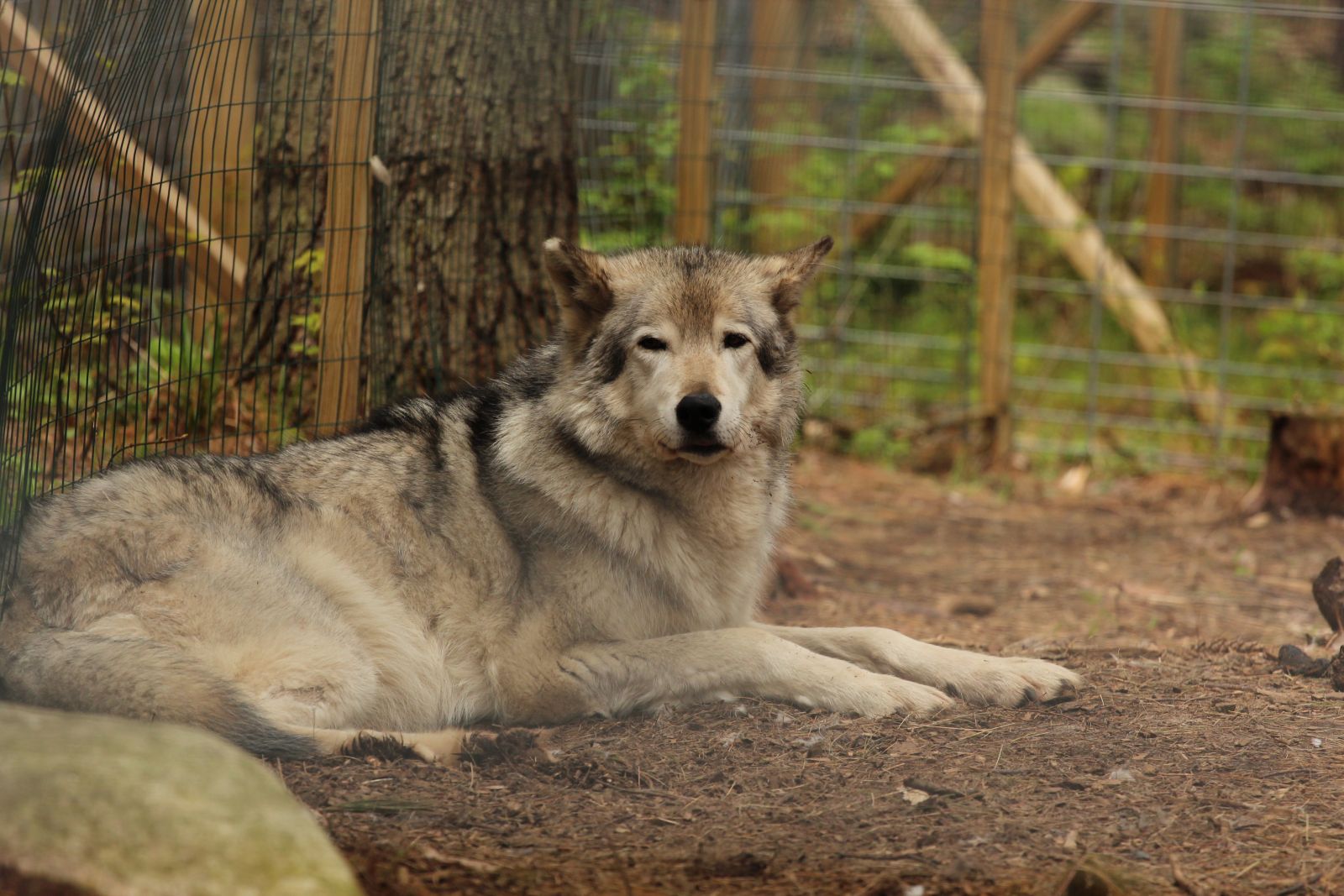
In a separate enclosure, Cree, a gray wolf aged fourteen, was, like Zeebie, lounging, but not for long. After a few minutes, he yawned, rose, scratched his back on his fencing, then slowly settled back down on the ground, this time as close to my side of the fence as possible. I wasn’t the attraction — I’m sure the new patch of sunshine was — but to say that I was awed and delighted at being within a yard of a wolf is an understatement. I slowly sat down on the ground, careful not to startle Cree, taking in the sight of his alert ears, thick fur, and his huge paws. Mostly, I was simply happy to be sitting so peacefully with him while he settled in for a sunny nap.
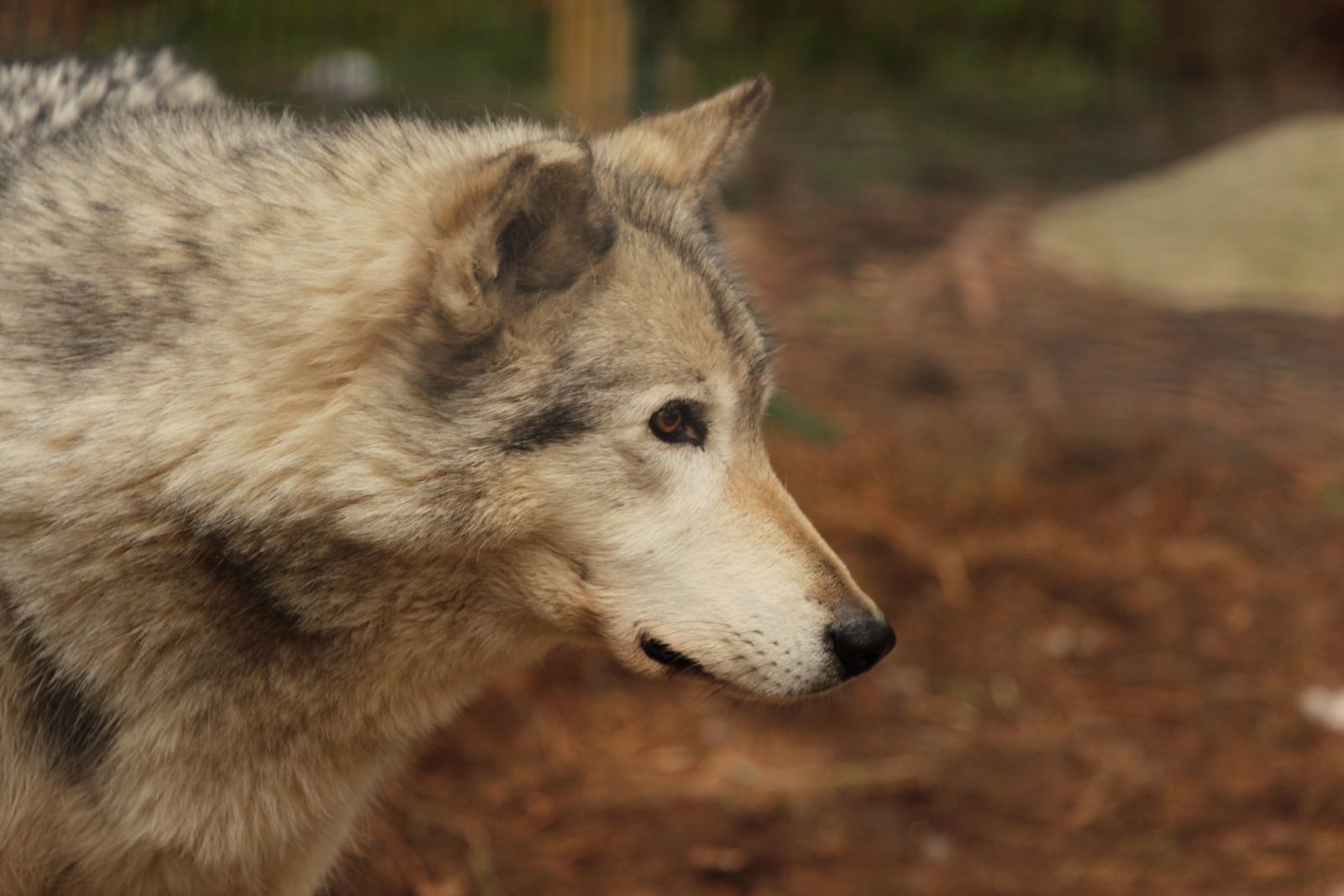
The refuge is the sort of place where you can do this and no one minds. Steve and Wendy are so deeply passionate and enthusiastic about their work that when visitors take a real interest, they are happy to share their knowledge and experiences. The sanctuary they have created isn’t just about viewing wildlife, it’s also very much about education, with a goal of letting people get close to animals and nature in order to understand animals better and expand their understanding of the world as an interconnected system. As Steve succinctly puts it, "everything depends on everything else." Habitat, co-existence, food chains, it's all connected and we're just one part of it. As Wendy says, "we are the ecosystem. There is nothing more pefect than nature itself."
Taking flight
The wolves at the refuge are only one of numerous species on view; by far the largest percentage of the population at the refuge are the varities of birds. As a bird lover, and owner, I always have my eyes and ears open for birds in the wild. On my way to the refuge, I saw a woodcock crossing the road, which, with its unusual, distinctive bobbing walk, is an amusing sight. Although I was eager to see the numerous birds at the refuge, I wasn’t prepared for how close I would be able to get to an American Kestrel, Bald Eagle, Gyrfalcon, and pairs of Ravens and Snowy Owls. I had never even seen a Snowy Owl, and suddenly, there were two right in front of me, eyeing me like I was the one on display. Maybe I was.
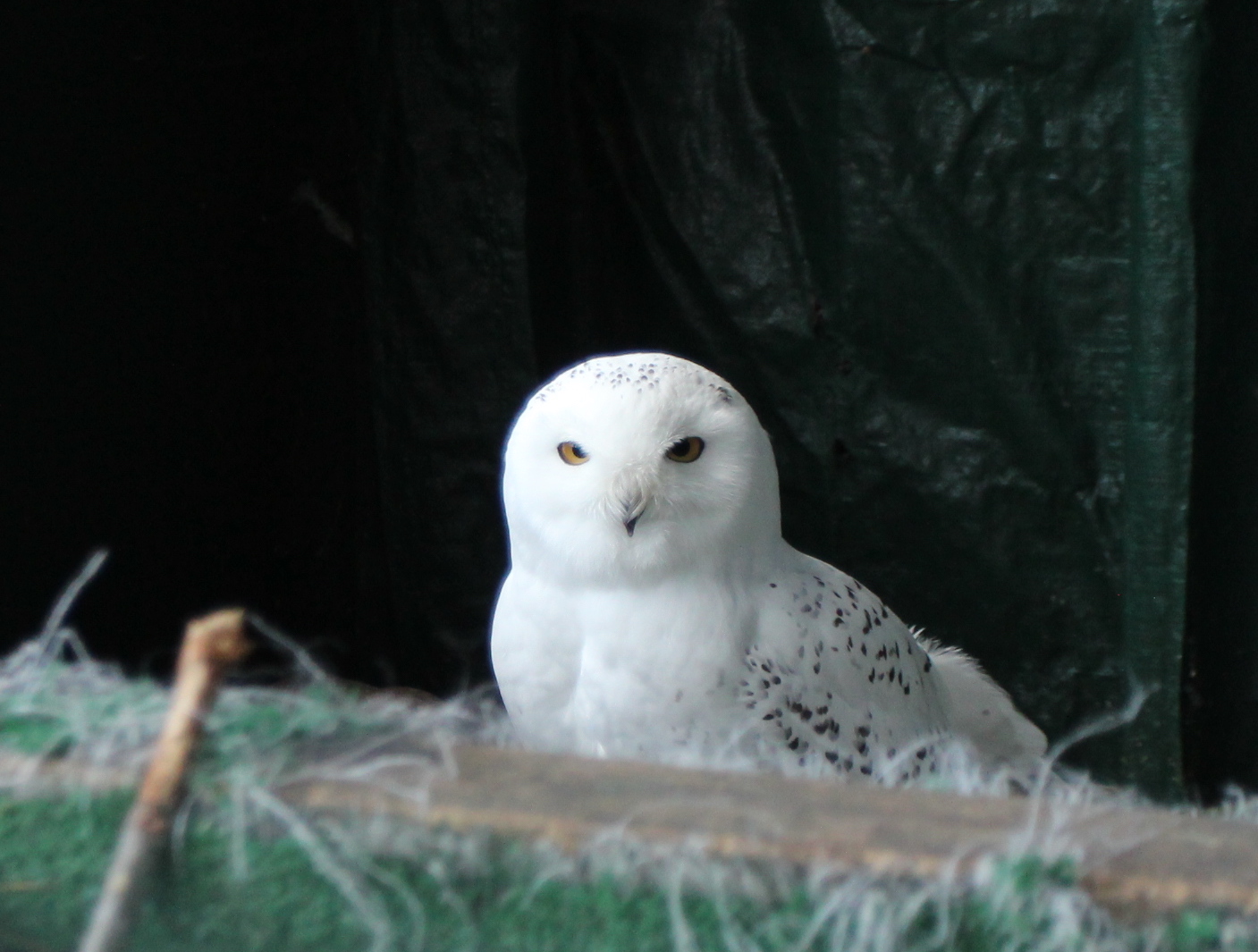
A pair of Common Ravens are alert, active, and noisy. When Wendy, whose close bond to the birds is evident, is moving amid the enclosures, they seem to know it, as evidenced by their chatter. It's tempting and too easy to assign attributes to the behavior of animals, but as Steve said, these animals aren't stupid. For one thing, they associate Wendy with food and that's a strong motivator. Yet even when I was near their enclosure, I had the distinct impression they were assessing me and my presence in their space.
In contrast, the refuge is also home to Tyr, a Gyrfalcon, which was not at all interested in me, but was instead alertly eyeing a vulture in an enclosure across the path from him. Gyrfalcons are tremendous hunters and are prized hunting birds. Tyr was donated to the refuge by a breeder and can no longer hunt, due to his wings having been clipped before he moved to Wilmington, but his instinct to hunt remains strong. Wendy, whose knowledge of wildlife seems boundless, explained to me how falcons hunt. In eyeing his neighbor the vulture, Tyr was showing typical falcon behavior. "He’s focused. He wants that bird. That would be planning. He’s like, ‘what’s my next move here?’ They’re very deliberate and they’re very, very fast. Falcons are fantastic animals.” Tyr may not have been able to snack on vulture that day, but with Wendy and Steve looking after him, he doesn't have to worry about his next meal.
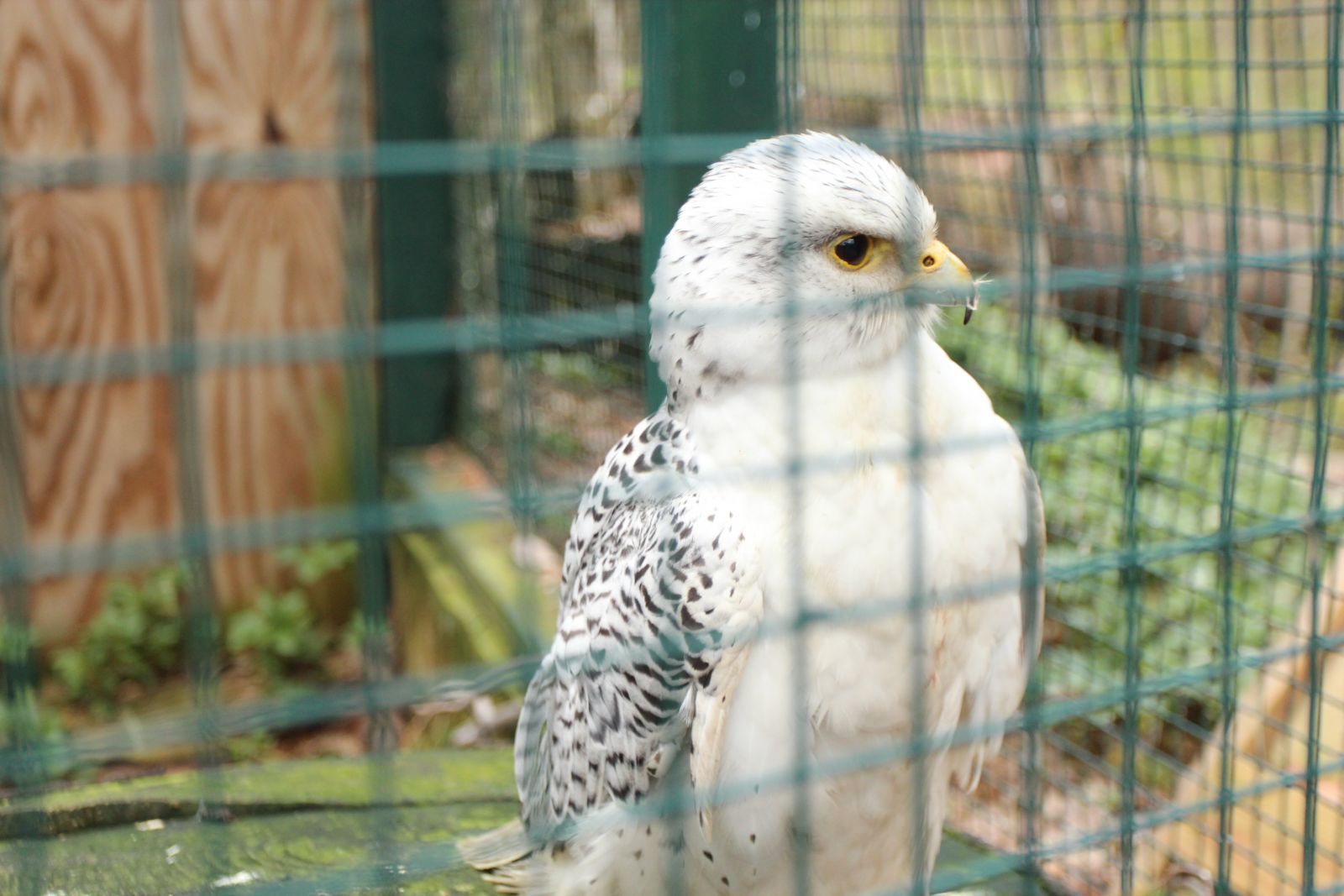
This is part of the amazing thing about spending time at the refuge: seeing animals peacefully, and even vibrantly, co-existing mere feet from each other, when in the wild one would surely be preying on the other. Here, the fisher named Wobbles — his hind legs are not as strong as most of his species — lives next door to his natural prey, a porcupine. Coyotes and gray wolves live side by side, not as competitors for the same prey. The lesson is profound.
Tips for visiting
The Adirondack Wildlife Refuge and Rehabilitation Center, located at 977 Springfield Road, Wilmington, is open 10 a.m. to 4 p.m., Thursday through Monday, all year round. There is no admission fee, but donations are encouraged to help continue care for rehabbing animals.
The paths at the refuge are relatively even, but those with wheelchairs may find the going a little rough. Hiking trails also provide the opportunity to stretch your legs and enjoy the pine forest and a map of trails is posted by Wolf Wood. Cold drinks and restrooms are available in the education center, as well as gift items, including t-shirts, postcards, and books.
While you're in the Whiteface Region, we hope you'll pause for a bite to eat, enjoy a scenic hotel or campsite, and maybe even say hi to Santa!
